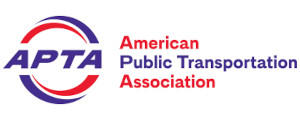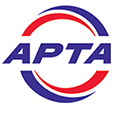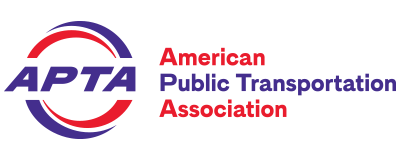Washington, D.C. (September 4, 2025) – New data released today by the American Public Transportation Association (APTA) highlights the growth and economic impact of the public transportation industry in the United States, reinforcing the need for strong and consistent investment in public transportation systems nationwide.
APTA’s new 2025 Public Transportation Fact Book shows ridership reached 7.66 billion trips in 2024—a significant rebound from pandemic lows. This represents the fifth consecutive year of ridership growth. Public transportation is a $93.4 billion industry that directly employs more than 430,000 people and supports several million private-sector jobs, making it a key driver of economic activity in communities of all sizes.
“These numbers tell a story of resilience and growth, and why investment in public transit and passenger rail is essential,” said Paul P. Skoutelas, President and CEO of APTA. “Public transportation remains the backbone of economic mobility in communities across America, with 87 percent of trips directly impacting the economy by connecting people to work, retail, healthcare, and entertainment opportunities.”
Key highlights from the 2025 Public Transportation Fact Book include:
- Economic Impact: Public transportation is a $93.4 billion industry, making it a significant economic driver, with 77 percent of federal transit funds supporting private businesses through contracts, services, and supply chains.
- Ridership Recovery: Ridership has shown steady growth, climbing from 4.81 billion trips in 2021 to 7.66 billion trips in 2024 – a 59 percent increase – demonstrating the essential nature of public transportation services.
- Employment Growth: The industry employs 437,313 people as of 2023, providing good-paying jobs and career opportunities across the nation. Public transportation employment has remained strong, supporting families and communities nationwide.
- System Expansion: The nation’s public transportation network continues to grow, with 26 Bus Rapid Transit systems, 48 surface rail systems (light rail and streetcar), 37 regional railroad systems (commuter rail and hybrid rail), and 16 heavy rail systems providing diverse transportation options.
“What these statistics really show is that public transportation is more than just moving people from point A to point B,” Skoutelas said. “We’re talking about connecting working Americans to economic opportunities, supporting students in their educational pursuits, and ensuring that communities remain accessible and vibrant.”
“Public transportation serves as a lifeline for communities large and small across America, especially for seniors and people with disabilities,” Skoutelas noted. “Rural residents with disabilities rely heavily on public transit, taking approximately 50 percent more public transit trips than those without disabilities.”
The data also reveals public transportation’s expanding role in supporting air travel and tourism, with 31 airports in 22 urbanized areas now connected to rail or Bus Rapid Transit systems, facilitating seamless multimodal transportation for travelers and workers.
“As we look toward the future, these numbers reinforce that investment in public transportation is investment in America’s economic competitiveness,” Skoutelas said. “Every trip on public transportation supports local businesses, reduces traffic congestion, and provides transportation options that benefit entire communities.”
APTA also released its 2025 Q2 Ridership Report showing that public transportation ridership was 7.3 percent higher in the second quarter of 2025 compared to the year before. Riders took more than 2 billion trips on public transportation in the quarter for the first time since 2020. Together, riders took 140 million more trips in the second quarter of 2025 than in the same quarter in 2024. Ridership has increased for five consecutive years.
Both APTA’s 2025 Public Transportation Fact Book and the 2025 Q2 Ridership Policy Brief are available online:
###



